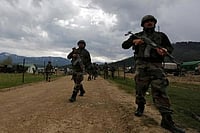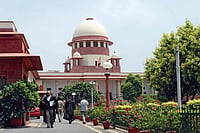Summer has set in and parts of Gangetic West Bengal, Odisha, Andhra Pradesh and Bihar are expected to experience heatwave conditions over the next three to four days, the India Meteorological Department informed on Thursday.
Several predictions have been made for the months of April, May and June this year, with experts warning of an El Nino effect that may even be worse than last year. El Nino effect is a phenomenon when the sea surface temperatures in the equatorial Pacific Ocean rise above normal, resulting in unusually warm weather and often impacting the monsoon as well.
India also experienced its hottest February in 2023 since record-keeping began in 1901. However, above-normal rainfall in March kept temperatures in check.
Earlier this month, the Met Office predicted above-normal maximum temperatures for most parts of the country from April to June. Above-normal heatwave days are expected in most parts of central, east, and northwest India during this period.
The only exceptions were parts of the northwest and the peninsular regions.
Which regions of India will witness a heatwave this month?
According to the IMD, heatwave conditions are likely in isolated pockets of Gangetic West Bengal until Monday (April 17), north coastal Andhra Pradesh and Odisha until Saturday (April 15) and Bihar from April 15 to April 17.
The maximum temperatures in central and north peninsular India are hovering in the range of 40 to 42 degrees Celsius at present. The weather department said maximum temperatures are three to five notches above normal in many parts of the western Himalayan region and northeast India, West Bengal, Sikkim, Odisha, coastal Andhra Pradesh and Kerala.
A heat wave is declared if the maximum temperature of a station reaches at least 40 degrees Celsius in the plains, at least 37 degrees in coastal areas and at least 30 degrees in hilly regions, and the departure from normal is at least 4.5 degrees.
In December last year, the World Bank report titled “Climate Investment Opportunities in India’s Cooling Sector” said the country is experiencing higher temperatures that arrive earlier and stay far longer. The report stated that severe heat waves, responsible for thousands of deaths across India over the last few decades, are increasing with alarming frequency and soon the country could become one of the first places in the world to experience heat waves that break the human survivability limit.
March 2022 was the warmest ever and the third driest in 121 years. The year also saw the country's third-warmest April since 1901.


























